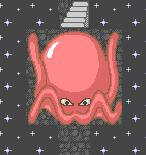
【頭文件 Main.h】
int WINAPI WinMain(HINSTANCE hInstance, HINSTANCE hPrevInstance, LPSTR lpCmdLine, int nCmdShow);
LRESULT CALLBACK WndProcedure(HWND hWnd, UINT uMsg, WPARAM wParam, LPARAM lParam);
【源文件 Main.c】
#include <Windows.h>
#include "Main.h"
LPCTSTR ClsName = L"BasicApp";
LPCTSTR WndName = L"A Simple Window";
INT WINAPI WinMain(HINSTANCE hInstance, HINSTANCE hPrevInstance, LPSTR lpCmdLine, int nCmdShow)
{
MSG Msg;
HWND hWnd;
WNDCLASSEX WndClsEx;
// Create the application window
WndClsEx.cbSize = sizeof(WNDCLASSEX);
WndClsEx.style = CS_HREDRAW | CS_VREDRAW;
WndClsEx.lpfnWndProc = WndProcedure;
WndClsEx.cbClsExtra = 0;
WndClsEx.cbWndExtra = 0;
WndClsEx.hIcon = LoadIcon(NULL, IDI_APPLICATION);
WndClsEx.hCursor = LoadCursor(NULL, IDC_ARROW);
WndClsEx.hbrBackground = (HBRUSH)GetStockObject(WHITE_BRUSH);
WndClsEx.lpszMenuName = NULL;
WndClsEx.lpszClassName = ClsName;
WndClsEx.hInstance = hInstance;
WndClsEx.hIconSm = LoadIcon(NULL, IDI_APPLICATION);
// Register the application
RegisterClassEx(&WndClsEx);
// Create the window object
hWnd = CreateWindow(ClsName, WndName, WS_OVERLAPPEDWINDOW, CW_USEDEFAULT, CW_USEDEFAULT, CW_USEDEFAULT, CW_USEDEFAULT, NULL, NULL, hInstance, NULL);
// Find out if the window was created
if (!hWnd) // If the window was not created
return 0; // stop the application
// Display the window to the user
ShowWindow(hWnd, SW_SHOWNORMAL);
UpdateWindow(hWnd);
// Decode and treat the messages
// as long as the application is running
while (GetMessage(&Msg, NULL, 0, 0))
{
TranslateMessage(&Msg);
DispatchMessage(&Msg);
}
return Msg.wParam;
}
LRESULT CALLBACK WndProcedure(HWND hWnd, UINT Msg, WPARAM wParam, LPARAM lParam)
{
switch (Msg)
{
case WM_DESTROY:
// If the user wants to close the application
// then close it
PostQuitMessage(WM_QUIT);
break;
default:
// Process the left-over messages
return DefWindowProc(hWnd, Msg, wParam, lParam);
}
// If something was not done, let it go
return 0;
}
